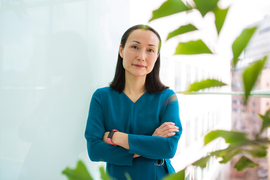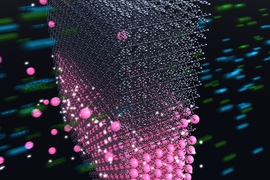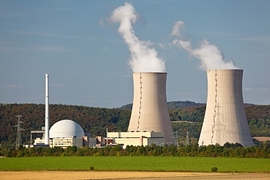Many researchers see an expansion of nuclear power, which produces no greenhouse gas emissions from its power generation, as an essential component of strategies to combat global climate change. Yet there is still strong resistance to such expansion, and much of that is based on the issue of how to safely dispose of the resulting radioactive waste material. MIT recently convened a workshop to help nuclear engineers, policymakers, and academics learn about approaches to communicating accurate information about the management of nuclear waste to students and the public, in hopes of allaying fears and encouraging support for the development of new, safer nuclear power plants around the world.
Organized by Haruko Wainwright, an MIT assistant professor of nuclear science and engineering and of civil and environmental engineering, the workshop included professors, researchers, industry representatives, and government officials, and was designed to emphasize the multidisciplinary nature of the issue. MIT News asked Wainwright to describe the workshop and its conclusions, which she reported on in a paper just published in the Journal of Environmental Radioactivity.
Q: What was the main objective of the this workshop?
A: There is a growing concern that, in spite of much excitement about new nuclear reactor deployment and nuclear energy for tackling climate change, relatively less attention is being paid to the thorny question of long-term management of the spent fuel (waste) from these reactors. The government and industry have embraced consent-based siting approaches — that is, finding sites to store and dispose nuclear waste through broad community participation with equity and environmental justice considered. However, many of us in academia feel that those in the industry are missing key facts to communicate to the public.
Understanding and managing nuclear waste requires a multidisciplinary expertise in nuclear, civil, and chemical engineering as well as environmental and earth sciences. For example, the amount of waste per se, which is always very small for nuclear systems, is not the only factor determining the environmental impacts because some radionuclides in the waste are vastly more mobile than others, and thus can spread farther and more quickly. Nuclear engineers, environmental scientists, and others need to work together to predict the environmental impacts of radionuclides in the waste generated by the new reactors, and to develop waste isolation strategies for an extended time.
We organized this workshop to ensure this collaborative approach is mastered from the start. A second objective was to develop a blueprint for educating next-generation engineers and scientists about nuclear waste and shaping a more broadly educated group of nuclear and general engineers.
Q: What kinds of innovative teaching practices were discussed and recommended, and are there examples of these practices in action?
A: Some participants teach project-based or simulation-based courses of real-world situations. For example, students are divided into several groups representing various stakeholders — such as the public, policymakers, scientists, and governments — and discuss the potential siting of a nuclear waste repository in a community. Such a course helps the students to consider the perspectives of different groups, understand a plurality of points of view, and learn how to communicate their ideas and concerns effectively. Other courses may ask students to synthesize key technical facts and numbers, and to develop a Congressional testimony statement or an opinion article for newspapers.
Q: What are some of the biggest misconceptions people have about nuclear waste, and how do you think these misconceptions can be addressed?
A: The workshop participants agreed that the broader and life-cycle perspectives are important. Within the nuclear energy life cycle, for example, people focus disproportionally on high-level radioactive waste or spent fuel, which has been highly regulated and well managed. Nuclear systems also produce secondary waste, including low-level waste and uranium mining waste, which gets less attention.
The participants also believe that the nuclear industry has been exemplary in leading the environmental and waste isolation science and technologies. Nuclear waste disposal strategies were developed in the 1950s, much earlier than other hazardous waste which began to receive serious regulation only in the 1970s. In addition, current nuclear waste disposal practices consider the compliance periods of isolation for thousands of years, while other hazardous waste disposal is not required to consider beyond 30 years, although some waste has an essentially infinite longevity, for example, mercury or lead. Finally, there is relatively unregulated waste — such as CO2 from fossil energy, agricultural effluents and other sources — that is released freely into the biosphere and is already impacting our environment. Yet, many people remain more concerned about the relatively well-regulated nuclear waste than about all these unregulated sources.
Interestingly, many engineers — even nuclear engineers — do not know these facts. We believe that we need to teach students not just cutting-edge technologies, but also broader perspectives, including the history of industries and regulations, as well as environmental science.
At the same time, we need to move the nuclear community to think more holistically about waste and its environmental impacts from the early stages of design of nuclear systems. We should design new reactors from the “waste up.” We believe that the nuclear industry should continue to lead waste-management technologies and strategies, and also encourage other industries to adopt lifecycle approaches about their own waste to improve the overall sustainability.












